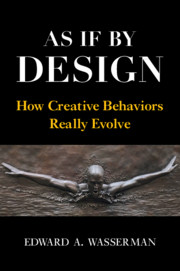Section 1 - Introduction
Published online by Cambridge University Press: 01 July 2021
Summary
In my book, I explore the origin and evolution of a variety of behavioral innovations – including the Butterfly Stroke, the High Five, and the Heimlich Maneuver – which appear to have been ingeniously and foresightfully designed. More commonly, however, these creative acts have actually arisen “as if by design.” This revelation requires a much more thorough look into the histories of these innovations in order to better understand the very nature of behavioral creativity. What emerges is an intricate web of causation involving three main factors: context, consequence, and coincidence. By concentrating on the process rather than the product of innovation, I elevate behavior to its proper place – at the very center of creative human endeavor – for it is truly behavior that produces the innumerable innovations that have captivated thinkers’ imagination. Those most splendid theories, goods, and gadgets would never have come into being without the behaviors of their inventors.
- Type
- Chapter
- Information
- As If By DesignHow Creative Behaviors Really Evolve, pp. 1 - 16Publisher: Cambridge University PressPrint publication year: 2021



